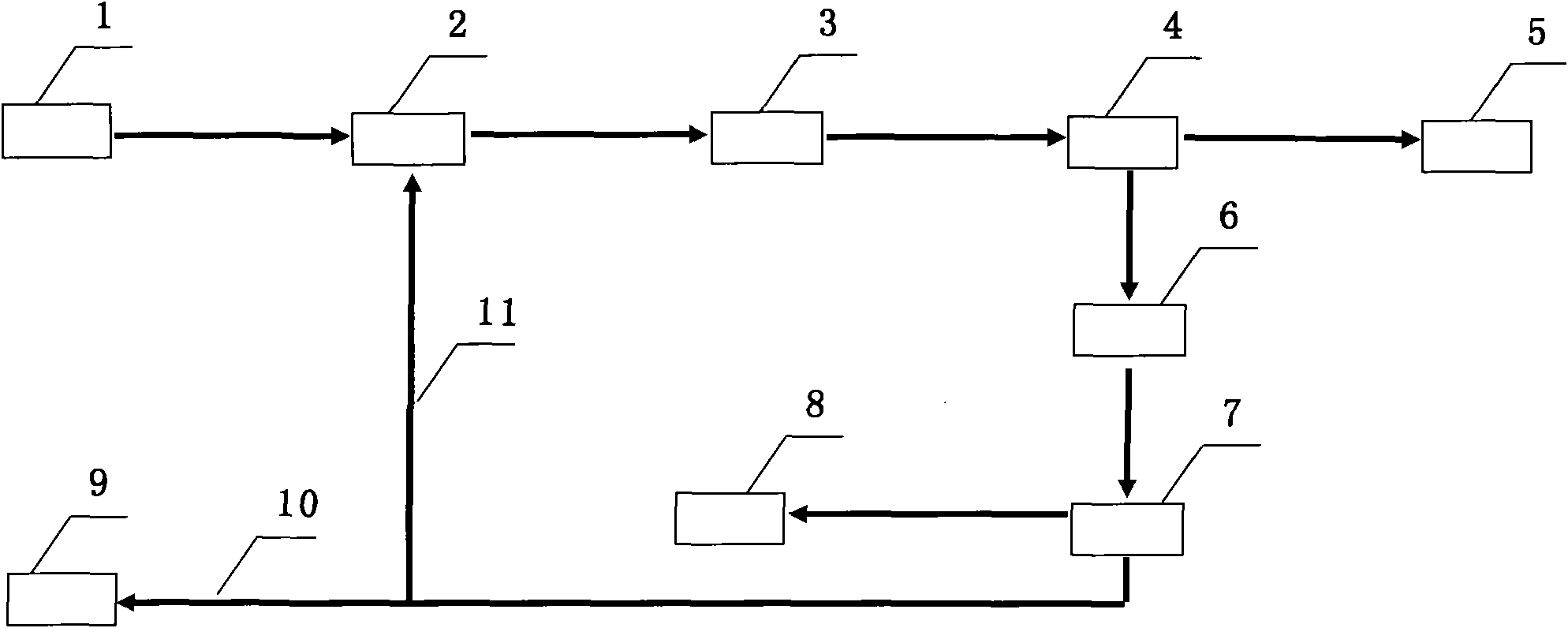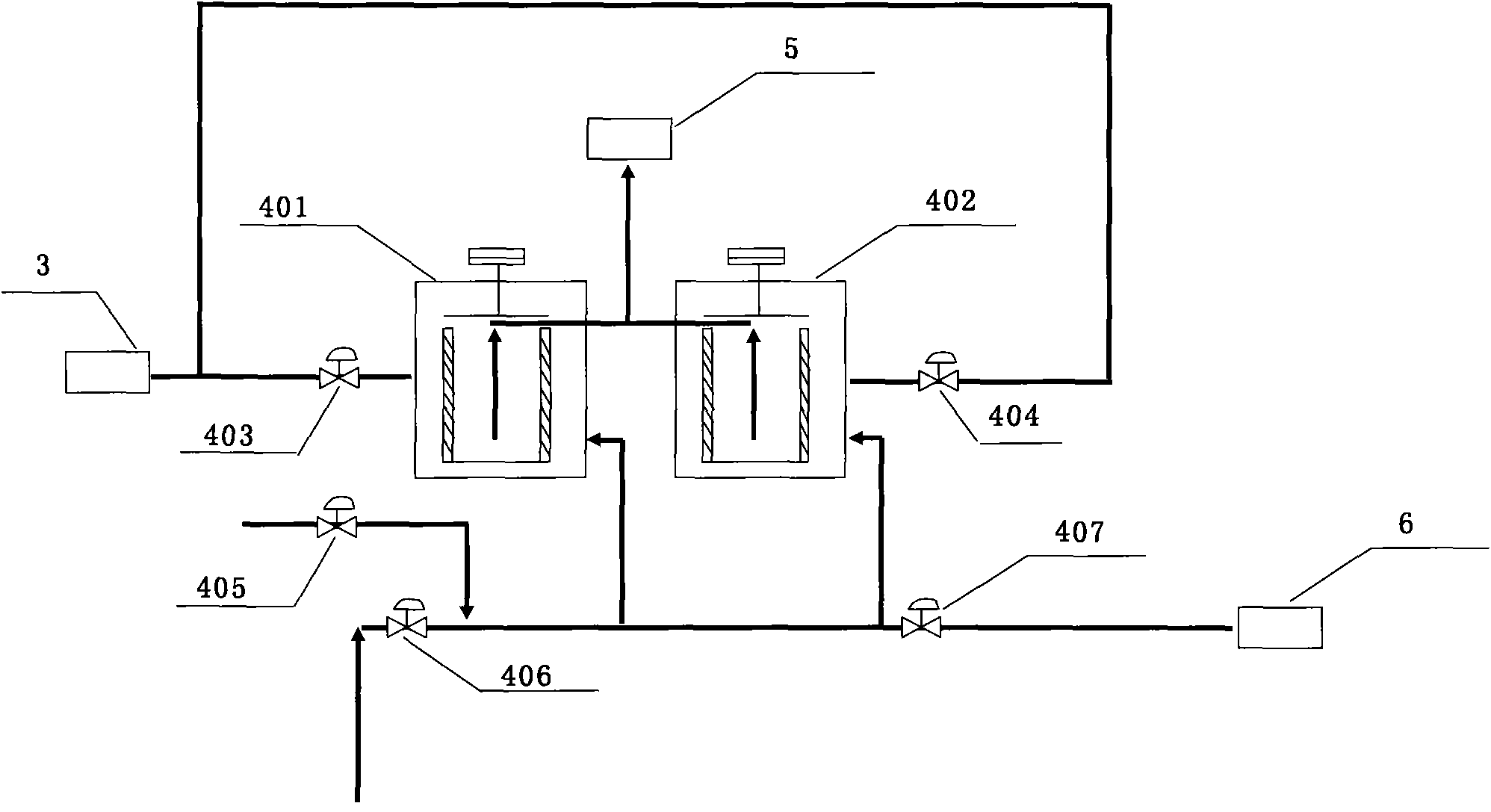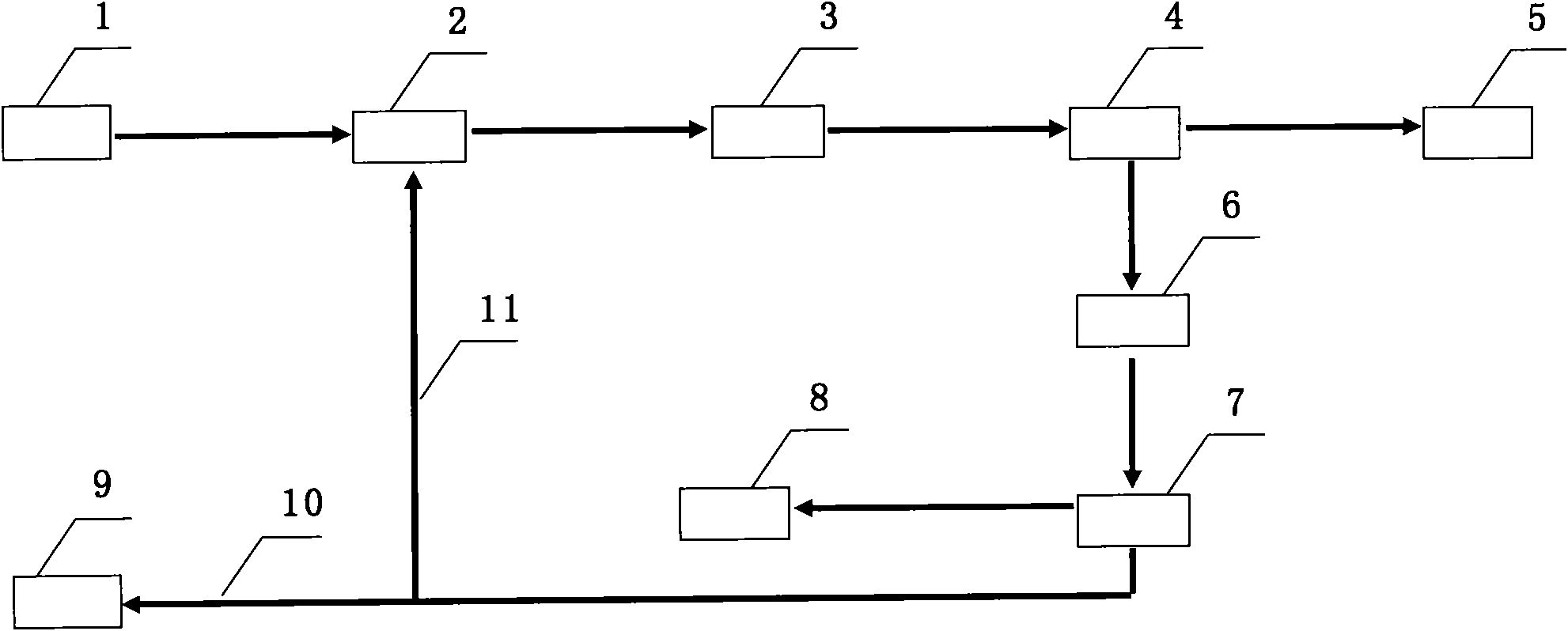Process for purifying organic waste gas and reclaiming organic solvent
A technology of organic solvents and organic waste gas, applied in chemical instruments and methods, separation methods, steam condensation, etc., can solve problems such as spontaneous combustion, hidden dangers, and flash explosion safety, and achieve water conservation, low cost, and simple and easy process Effect
- Summary
- Abstract
- Description
- Claims
- Application Information
AI Technical Summary
Benefits of technology
Problems solved by technology
Method used
Image
Examples
Embodiment 1
[0024] Such as figure 1 As shown, the waste gas containing organic solvent generated from the production device 1 is formed by the high-pressure fan 3 to form a slight negative pressure, and after the water washing tower 2 removes impurities, it is sent to the activated carbon fiber waste gas adsorption / desorption equipment 4, and the organic solvent is first absorbed by the activated carbon fiber. , and then use saturated water vapor to desorb the organic solvent in the activated carbon fiber. After desorption, the organic solvent and steam condensate form a mixed aqueous solution, which is sent to the mixed liquid layered tank 7 after heat exchange and cooling by the cooler 6. After layering, The upper part of the organic solvent is sent to the organic solvent collection tank 8 for recycling, part of the lower part of the wastewater is sent back to the water washing tower 2 for recycling through the pipeline 11, and part of it is sent to the wastewater treatment device 9 thro...
PUM
 Login to View More
Login to View More Abstract
Description
Claims
Application Information
 Login to View More
Login to View More - R&D
- Intellectual Property
- Life Sciences
- Materials
- Tech Scout
- Unparalleled Data Quality
- Higher Quality Content
- 60% Fewer Hallucinations
Browse by: Latest US Patents, China's latest patents, Technical Efficacy Thesaurus, Application Domain, Technology Topic, Popular Technical Reports.
© 2025 PatSnap. All rights reserved.Legal|Privacy policy|Modern Slavery Act Transparency Statement|Sitemap|About US| Contact US: help@patsnap.com



